
The Sphingidae are a family of moths commonly called sphinx moths, also colloquially known as hawk moths, with many of their caterpillars known as "hornworms"; it includes about 1,450 species. It is best represented in the tropics, but species are found in every region. They are moderate to large in size and are distinguished among moths for their agile and sustained flying ability, similar enough to that of hummingbirds as to be reliably mistaken for them. Their narrow wings and streamlined abdomens are adaptations for rapid flight. The family was named by French zoologist Pierre André Latreille in 1802.
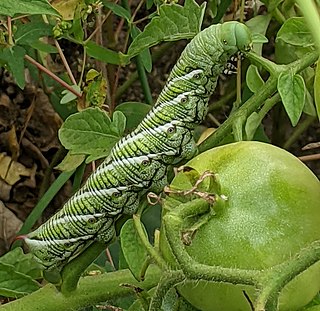
Manduca sexta is a moth of the family Sphingidae present through much of the Americas. The species was first described by Carl Linnaeus in his 1763 Centuria Insectorum.

Manduca quinquemaculata, the five-spotted hawkmoth, is a brown and gray hawk moth of the family Sphingidae. The caterpillar, often referred to as the tomato hornworm, can be a major pest in gardens; they get their name from a dark projection on their posterior end and their use of tomatoes as host plants. Tomato hornworms are closely related to the tobacco hornworm Manduca sexta. This confusion arises because caterpillars of both species have similar morphologies and feed on the foliage of various plants from the family Solanaceae, so either species can be found on tobacco or tomato leaves. Because of this, the plant on which the caterpillar is found does not indicate its species. The caterpillar is highly toxic and can cause major swelling if touched.

Pimelia is a genus of darkling beetles in the subfamily Pimeliinae.

Johann Christoph Friedrich Klug, was a German entomologist. He described the butterflies and some other insects of Upper Egypt and Arabia in Christian Gottfried Ehrenberg and Wilhelm Friedrich Hemprich's Symbolæ Physicæ. He was professor of medicine and entomology in the University of Berlin where he curated the insect collections from 1810 to 1856. At the same time he directed the Botanic Garden in Berlin which contains his collections. Klug worked mainly on Hymenoptera and Coleoptera. The plant genus Klugia was named in his honour as well as the butterflies Geitoneura klugii and Heliophisma klugii.

Manduca rustica, the rustic sphinx, is a moth of the family Sphingidae. The species was first described by Johan Christian Fabricius in 1775.

Manduca is a genus of moths in the family Sphingidae, the hawkmoths. The genus is used as a model in the biological sciences. The tobacco hornworm and the tomato hornworm in particular have been well studied. The genus was erected by Jacob Hübner in 1807.

Manduca florestan, the Florestan sphinx, is a moth of the family Sphingidae. The species was first described by Caspar Stoll in 1782.
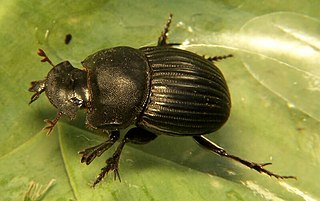
Copris is a genus of dung beetles in the tribe Coprini of the scarab family. It comprises more than 250 tunnelling species and has an almost worldwide distribution.
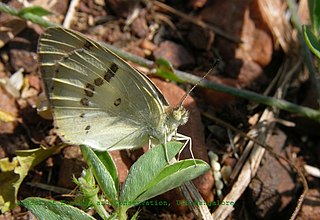
Colotis, called orange tips or Arabs, is a genus of butterflies of the subfamily Pierinae found mainly in Africa and south-western Asia. The larvae of all Colotis species specialize on plants in the family Capparaceae.

Eumorpha typhon, the Typhon sphinx, is a moth of the family Sphingidae. The species was first described by Johann Christoph Friedrich Klug in 1836.

Manduca diffissa is a moth of the family Sphingidae first described by Arthur Gardiner Butler in 1871. It is known from most of South America.

Manduca dilucida is a moth of the family Sphingidae first described by William Henry Edwards in 1887.
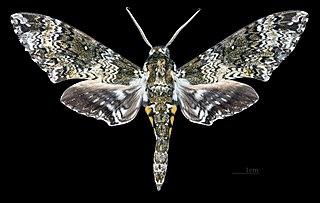
Manduca sesquiplex is a moth of the family Sphingidae. It is known from Mexico, Costa Rica and Nicaragua.
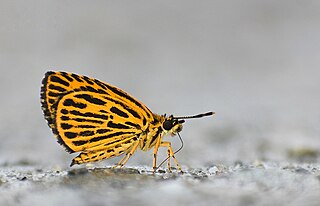
Ochus subvittatus, the tiger hopper, is the only species in the monotypic moth genus Ochus of the family Hesperiidae. The genus was erected by Lionel de Nicéville in 1894. The species was first described by Frederic Moore in 1878. It is found in the Khasi Hills and Naga Hills of India, Myanmar, Thailand, Laos, Vietnam and Yunnan.


















